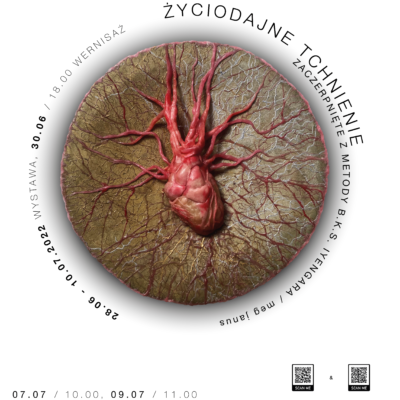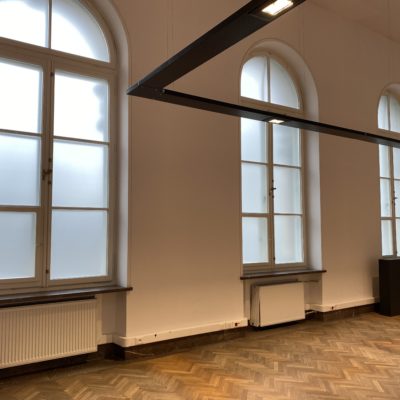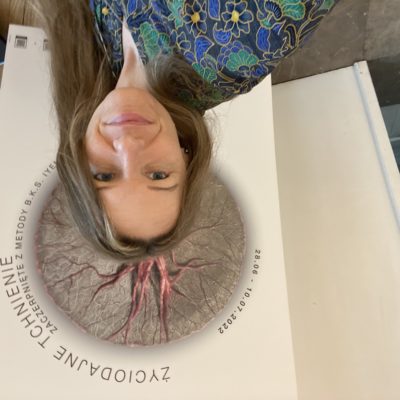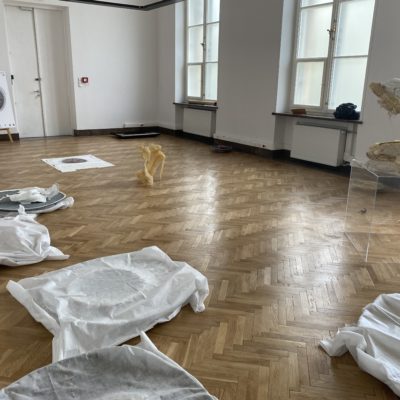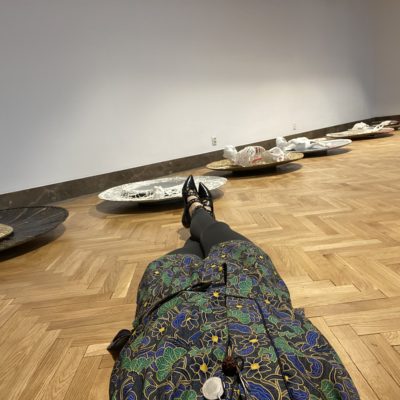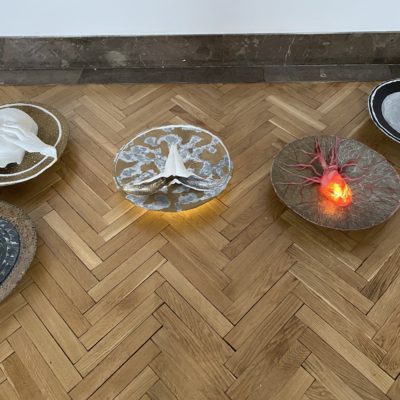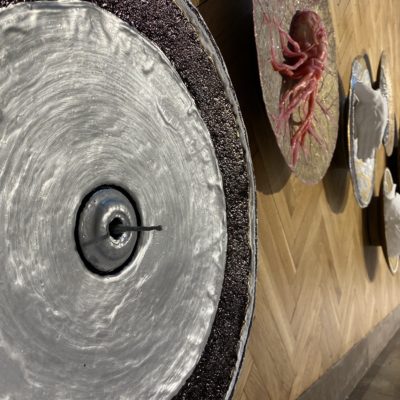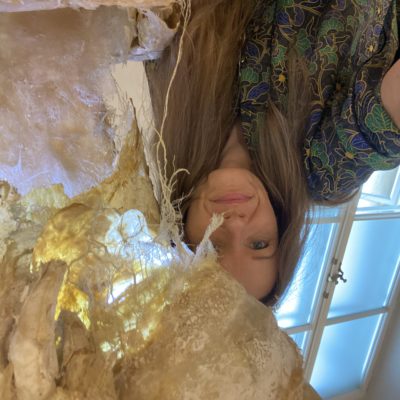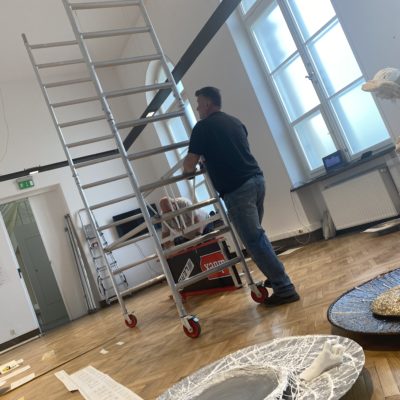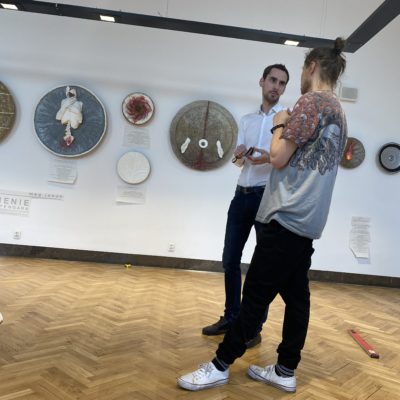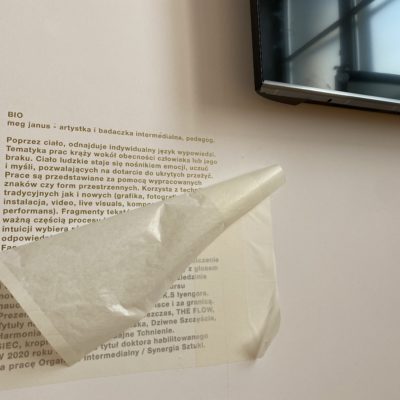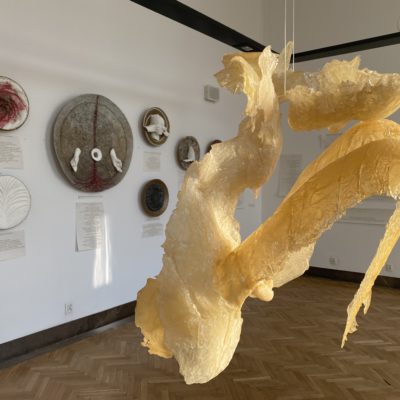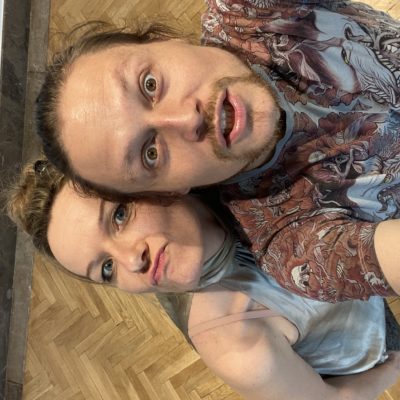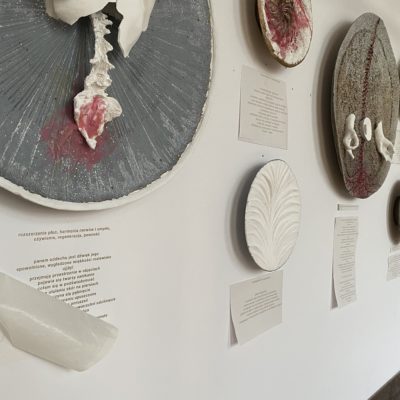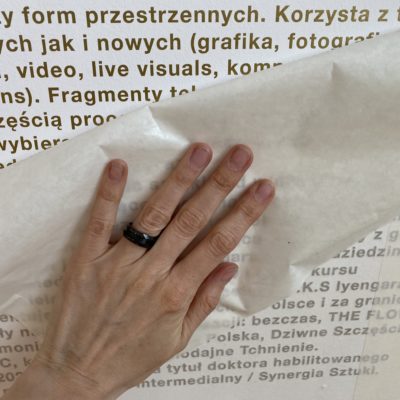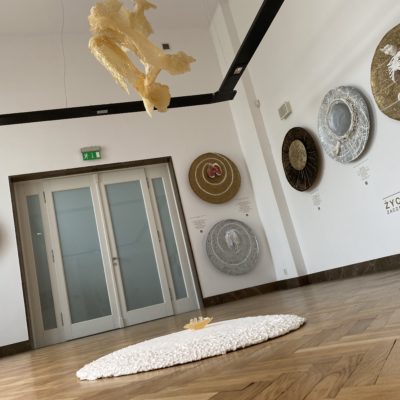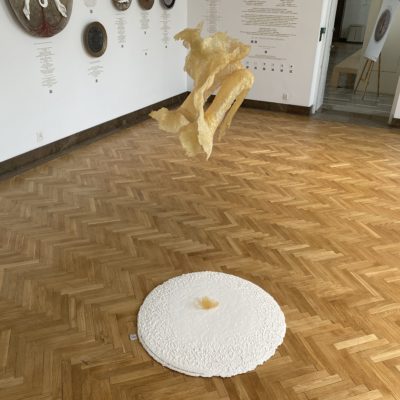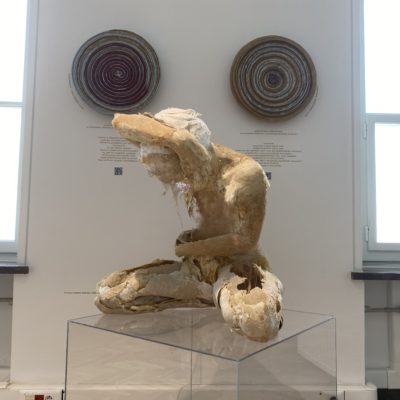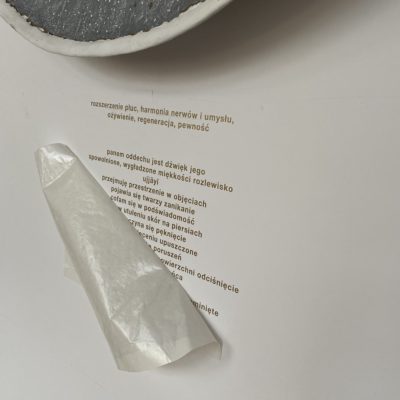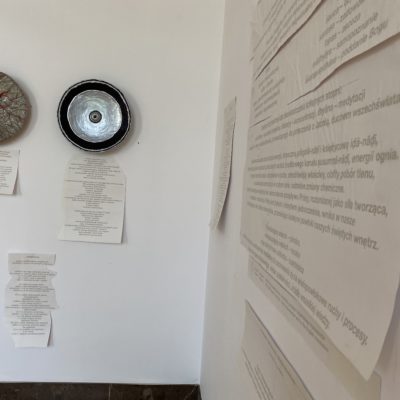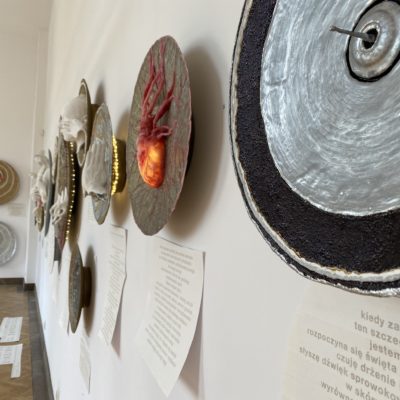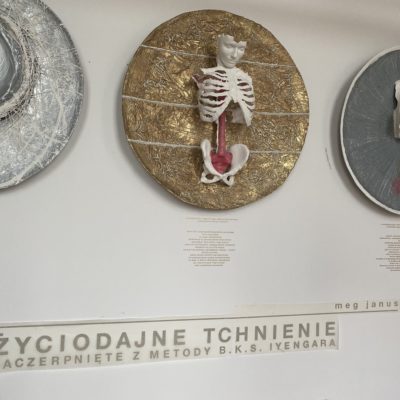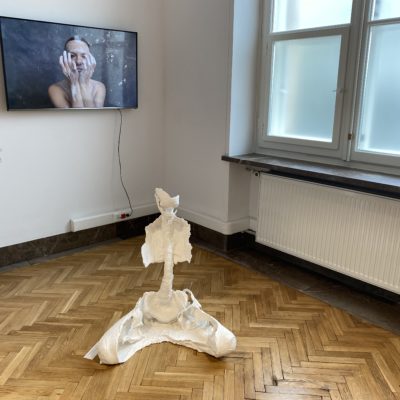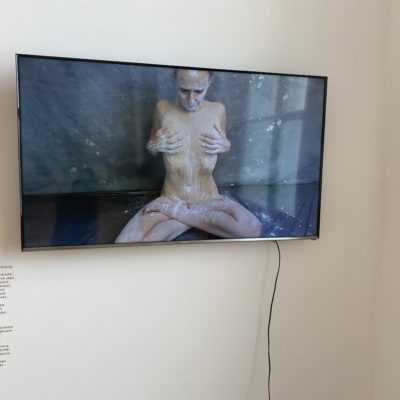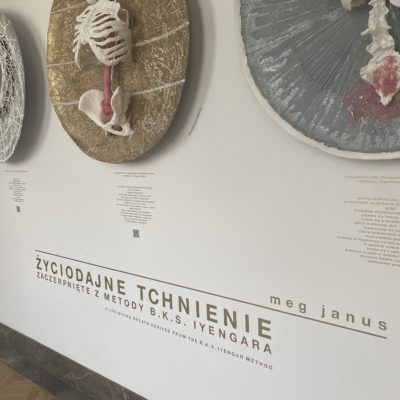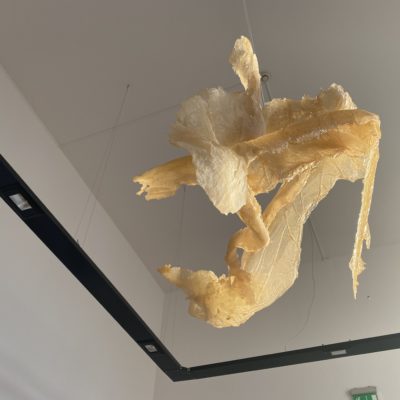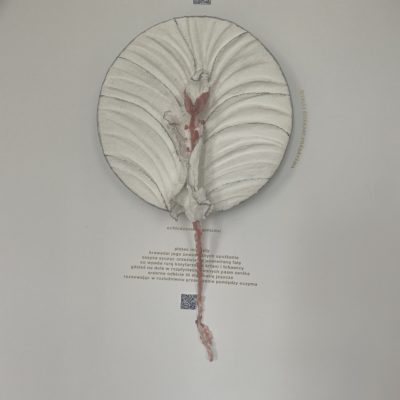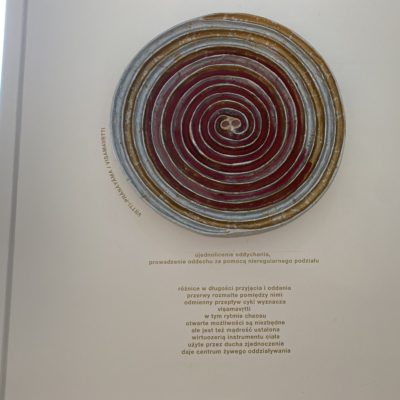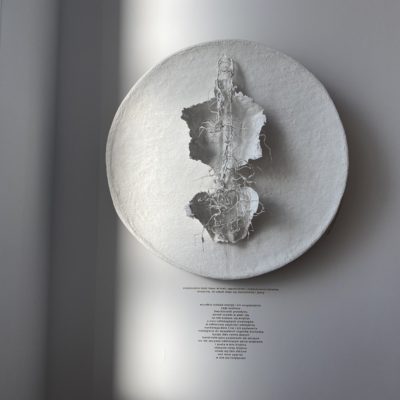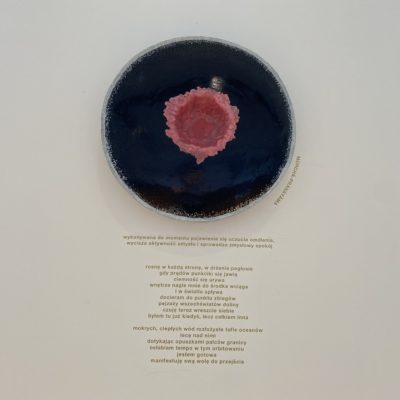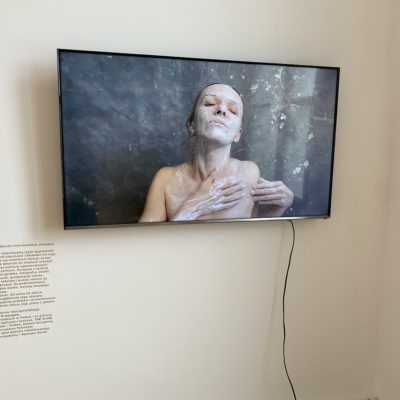THE EXHIBITION / WYSTAWA
Breath is life. The art of balanced, thoughtful, non-greedy breathing is a prayer of gratitude that we offer to life itself.
Light on Life: The Yoga Journey to Wholeness, Inner Peace, and Ultimate Freedom (Iyengar Yoga Books), published by Galaktyka, Lodz, 2006, p. 66
The exhibition is an opportunity to give thanks for the method and practice of B.K.S. Iyengar, for the goodness that flowed from it and has never let me down.
The Life-giving Breath is Prānāyāma, the binder that unites physicality with spirituality, the art of rhythmic, controlled breathing in yoga. Through it we gradually become observers of discoveries far beyond what we can give a name to. Prānāyāma stimulates two kinds of energy, the solar piṅgalā-nāḍī and the lunar iḍā-nāḍī, which intersect in the chakras located along the central channel of ṣusumṇā-nāḍī, the energy of fire. The precise techniques of the art of breathing in yoga, as B.K.S. Iyengar writes, enable the proper, abundant intake of oxygen, which causes, subtle chemical changes in the entire body. It is thanks to them that the flow of Prāṇa, understood as the force that creates, protects and destroys, is regulated and strengthened. Prāṇa is being but also being not. At the same time. Permeating all forms of matter. It penetrates our bodies consisting of the five elements, permeating the successive shells of our inner temples.
The practice of Prānāyāma is part of the eight-step path of yoga.
It follows the assimilation and continuous application of the first three petals: yam – social discipline, niyam – individual discipline, and āsan – specific postures.
It also opens up space for experiencing the next degrees: pratyāhāra – withdrawal of the senses, dhāraṇa – concentration, dhyāna – meditation, and samādhi – the state of hyperconsciousness leading to union with the Self, the spirit of the universe.
yama – social discipline
ahiṁsā – non-harming
satya – truth
asteya – refraining from stealing
brahmacarya – temperance
aparigraha – non-gathering
niyama – individual discipline
śauca – purity
santoṣa – satisfaction
tapas – asceticism
svādhyāya – self-knowledge
Īśvarapraṇidhāna – surrendering to God
The stimulating inhalation – pūraka, the purifying exhalation – recaka, and the stopping breath – kumbhaka initiate, activate, and sustain the multilayered movements and processes necessary for the preservation of life. The primordial energy, the nectar of subtlety, the source of all knowledge, is revealed.
Facing the phenomenon of breath and then exploring the possibility of transferring subtle sensations from the body to media art is a creative challenge that requires following the organic. Not to define, not to limit, but to allow for intuition and sensuality… Making these experiences visible through aesthetic means of artistic expression allows for greater insight into and contemplation of the layers of human existence.
feel the listening to your breath
listening to the body
a captivating, incomprehensible masterpiece
forms, techniques and hand tool extensions
gesture release
imprints of the activated areas
the captured nature of impressions in the recorded traces of creation
interpenetrating, different in specificity and material of the network
collected textures of touched tissues
guessed colors, vibrating sounds
the wonder of organic meanings
pulsing, vibrating, resonating…
The exhibition is a tribute to the breath and a reflection on the human being, its construction, depth and magnificence. It is an inner journey guided by particular pranayamic techniques, in the order of acquisition recommended by B.K.S. Iyengar.
The exposure contains intermedia artefacts, some of them created via upcycling. It consists of eighteen discs of approx. 100 and 45cm in diameter, as well as free-standing forms. The presented objects are made of various materials and exist on the border between different artistic methods.
The entire project is complemented by the text that guides the viewer, binding in the flow the subsequent stages of the initiation path. The video, combined with the last piece, enriches the space with sound.
The exhibition is accompanied by the meeting Introduction to the world of pranayama / practice, a curatorial tour, which serves as an opportunity to deepen the presentation of the exhibition and the included works.
The prepared practical session enables participants to internally immerse themselves. Getting acquainted with the correct position of the body, paying attention to particular feelings while closing the eyes and gradually coming out of the process – those activities will form the basis for experiencing namaskārāsana – the position with joined hands, ṣaṇmukhῑ-mudra – the position enabling you to venture inside, bhrāmari-prāṇāyāma – making the sound similar to the buzzing of a bumblebee, bῑja-prāṇāyāma – chanting a mantra.
Observation, reflection and the resonance activated in the body will reveal the next stage of the journey related to the art of relaxation – śavāsana. Letting go and contemplating the breath will become an introduction to the world of pranayama and sensations contained in the objects presented at the exhibition.
The meeting is for ages 14+.
Due to limited seating, registration is mandatory.
Please send submissions to: rezerwacje@ethnomsuem.pl
I cordially invite you to the exhibition and to take in a breath.
namaskaram, meg janus
State Ethnographic Museum in Warsaw
30.06.2022 MONDAY 6.00 pm – opening
28.06 – 10.07.2022 – exhibition (open during museum opening hours)
30.06 THURSDAY 10.00 am and 09.07 SATURDAY 11.00 am – Introduction to the world of pranayama / practice and guided tour
Author and curator: megjanus
Pranayama – mentoring and consultation: Konrad Kocot
Partner – State Ethnographic Museum in Warsaw
Research work carried out as part of a sabbatical leave at the Academy of Fine Arts in Warsaw, Media Art Department
Project under the patronage of the Iyengar Yoga Association in Poland
The project supports SAVE SOIL, a global movement to save soil started by Sadhguru, Let’s make it happen!
Oddech jest życiem, więc sztuka wyważonego, przemyślanego, pozbawionego łapczywości oddychania jest modlitwą wdzięczności, którą ofiarowujemy samemu życiu.
Joga światłem życia, B.K.S. Iyengar, wyd. Galaktyka, Łódź, 2006, str. 66
Wystawa jest okazją do wyrażenia podziękowania za metodę i praktykę B.K.S. Iyengara, za jej spływające dobro, które nigdy mnie nie zawiodło.
Życiodajne Tchnienie to Prānāyāma, spoiwo scalające fizyczność z duchowością, to sztuka rytmicznego, kontrolowanego oddychania w jodze. Za jej pośrednictwem stopniowo stajemy się obserwatorami odkryć wykraczających daleko poza nazwane. Prānāyāma pobudza dwa rodzaje energii, słoneczną piṅgalā-nāḍī i księżycową iḍā-nāḍī, które krzyżują się w czakrach, położonych wzdłuż środkowego kanału ṣusumṇā-nāḍī, energii ognia. Precyzyjne techniki sztuki oddychania w jodze, jak pisze B.K.S. Iyengar, umożliwiają właściwy, obfity pobór tlenu, co powoduje, zachodzące w całym ciele, subtelne zmiany chemiczne. Dzięki nim następuje regulacja, ale i wzmocnienie przepływu Prāṇy, rozumianej jako siła tworząca, chroniąca i niszcząca. Prāṇa jest bytem i niebytem jednocześnie, przenika wszelkie formy materii. Wnika w nasze ciała składające się z pięciu elementów, przenikając kolejne powłoki świątyni naszych wnętrz.
Zmierzenie się z takim fenomenem, jakim jest oddech, a następnie badanie możliwości transferowania subtelnych doznań z ciała na sztukę mediów to wyzwanie twórcze, które wymaga podążania za organicznością. Nie definiowania, nie ograniczania, ale przyzwolenia sobie na intuicję i sensualność… Uwidocznienie zaś tych przeżyć za pośrednictwem estetycznych środków wyrazu i ekspresji artystycznej pozwala na większy wgląd w warstwy ludzkiej egzystencji i ich kontemplacji.
słuchanie oddechu poczuć
słuchanie ciała
wciągające, niepojęte arcydzieło
formy, techniki i przedłużenia narzędziem dłoni
uwolnienie gestu
odciśnięcia uruchomionych obszarów
ujęta natura wrażeń w zapisanych śladach kreacji
przenikające się, odmienne w specyfice i tworzywie sieci
zebrane faktury dotykanych tkanek
odgadnięte kolory, dźwięki wibracji
cudowność organicznych znaczeń
tętnią, wibrują, rezonują…
Praktyka Prānāyāmy jest częścią ośmiostopniowej ścieżki jogi.
Następuje po przyswojeniu i ciągłym stosowaniu trzech pierwszych płatków: yam – dyscypliny społecznej, niyam – dyscypliny indywidualnej oraz āsan – określonych pozycji ciała.
Otwiera też przestrzeń dla doświadczania kolejnych stopni: pratyāhāry – wycofania zmysłów, dhāraṇy – koncentracji, dhyāna – medytacji i samādhi – stanu nadświadomości, prowadzącego do połączenia z Jaźnią, duchem wszechświata.
yamy – dyscyplina społeczna
ahiṁsā – niekrzywdzenie
satya – prawda
asteya – powstrzymanie się od kradzieży
brahmacarya – wstrzemięźliwość
aparigraha – niegromadzenie
niyamy – dyscyplina indywidualna
śauca – czystość
santoṣa – zadowolenie
tapas – asceza
svādhyāya – samopoznanie
Īśvarapraṇidhāna – poddanie Bogu
Ekspozycja jest hołdem dla oddechu i refleksją o człowieku, jego konstrukcji, głębi i wspaniałości. Jest podróżą wewnętrzną prowadzoną przez poszczególne pranajamiczne techniki, w zalecanej przez B.K.S. Iyengara kolejności przyswajania.
Wystawa zawiera intermedialne artefakty, częściowo powstałe z upcyklingu. Składa się z osiemnastu dysków o średnicy ok. 100 i 45 cm oraz form wolnostojących. Zaprezentowane obiekty wykonane są z różnych materiałów, na pograniczu odmiennych metod plastycznych.
Całość dopełniona jest tekstem, który prowadzi widza wiążąc w przepływie, kolejne etapy drogi wtajemniczenia. Wideo połączone z ostatnią pracą wzbogaca przestrzeń dźwiękiem.
Wystawie towarzyszy spotkanie Wprowadzenie do świata pranajamy / praktyka, oprowadzanie kuratorskie, które jest szansą dla pogłębienia tematu wystawy i prezentowanych prac.
Przygotowana sesja praktyczna, umożliwia uczestnikom wewnętrzne zanurzenie. Zapoznanie się z prawidłowym ułożeniem ciała, zwracanie uwagi na poszczególne poczucia podczas zamykania oczu oraz stopniowe wychodzenie z procesu, będzie stanowiło bazę dla doświadczenia namaskārāsany – pozycji ze złączonymi dłońmi, ṣaṇmukhῑ-mudry – pozycji umożliwiającej zwrócenie się do wnętrza, bhrāmari-prāṇāyāmy – wydobywania dźwięku podobnego do buczącego trzmiela, bῑja-prāṇāyāmy – śpiewania mantry.
Obserwacja postrzeżeń, refleksja oraz uruchomiony w ciele rezonans odsłoni kolejny etap podróży powiązany ze sztuką relaksu – śavāsaną. Odpuszczenie i kontemplacja oddechu stanie się wprowadzeniem do świata pranajamy oraz doznań zawartych w prezentowanych na wystawie obiektach.
Spotkanie dla osób powyżej 14 roku życia.
Ze względu na ograniczoną liczbę miejsc obowiązują zapisy.
Zgłoszenia prosimy kierować na adres: rezerwacje@ethnomuseum.pl
namaskaram, meg janus
Państwowe Muzeum Etnograficzne w Warszawie
30.06.2022 CZWARTEK godz.18.00 – wernisaż
28.06 – 10.07.2022 – wystawa (czynna w godzinach otwarcia muzeum)
30.06 CZWARTEK godz. 10.00 i 09.07 SOBOTA godz. 11.00 – Wprowadzenie do świata pranajamy / praktyka, oprowadzanie kuratorskie
Autorka i kuratorka: megjanus
Pranajama – mentoring i konsultacje: Konrad Kocot
Partner – Państwowe Muzeum Etnograficzne w Warszawie
Praca badawcza realizowana w ramach urlopu naukowego na Akademii Sztuk Pięknych w Warszawie, Wydział Sztuki Mediów
Projekt pod Patronatem Stowarzyszenia Jogi Iyengara w Polsce
Realizacja wspiera SAVE SOIL globalny ruch na rzecz ratowania gleby, zainicjowany przez Sadhguru, Let’s make it happen!

